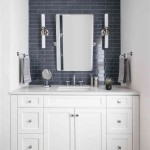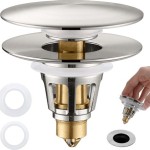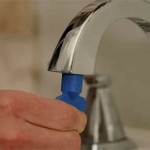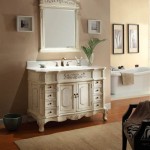```html
Can You Tile Over Bathroom Paint? A Comprehensive Guide
The question of whether one can install tile directly over painted bathroom walls is a complex one, laden with caveats and dependent on numerous factors. While technically feasible in certain limited scenarios, it is generally not recommended as a best practice due to the potential for long-term issues related to adhesion, moisture, and structural integrity. This article dissects the various considerations involved in this decision, exploring the optimal methods for tile installation in bathrooms and outlining the risks associated with tiling directly over paint.
The appeal of tiling over paint stems primarily from the perceived time and cost savings. Removing existing paint layers, patching imperfections, and preparing a proper substrate are labor-intensive processes. Skipping these steps and adhering tiles directly to the painted surface seems like an efficient shortcut. However, the long-term repercussions of such a decision often outweigh the initial benefits.
The primary concern revolves around the adhesion of the tile adhesive (thin-set mortar) to the painted surface. Thin-set mortar is designed to bond strongly with porous surfaces like cement board, concrete, or properly prepared drywall. Paint, on the other hand, presents a smooth, non-porous surface that inhibits the mortar's ability to create a permanent bond. This compromised adhesion can lead to tiles becoming loose, cracking, or even detaching from the wall over time.
Understanding the Risks of Tiling Directly Over Paint
Several significant risks are associated with tiling over bathroom paint, making it a practice to avoid whenever possible. These risks extend beyond simple aesthetic concerns and can potentially compromise the structural integrity of the wall itself.
The most immediate risk is poor adhesion. The bond between the thin-set mortar and the painted surface is inherently weaker than the bond that would be achieved with a properly prepared substrate. This weakness can manifest as tiles that easily detach from the wall, especially in areas subjected to moisture and temperature fluctuations, common in bathrooms. The type of paint, its age, and the number of layers all contribute to the severity of this risk. Glossy or semi-gloss paints, frequently used in bathrooms for their water resistance, are particularly poor surfaces for tile adhesion.
Moisture penetration is another significant concern. Bathrooms are high-humidity environments, and even with grout, moisture can seep behind the tiles. If the paint layer underneath is not waterproof (and most paints are not completely so), this moisture can become trapped. This trapped moisture can lead to the degradation of the paint, the underlying drywall, and even the wall studs. Mold and mildew growth are also significant possibilities in such an environment, posing health risks to occupants. The compromised bond between the tile and the wall exacerbates this problem, allowing moisture to penetrate more easily.
Potential for substrate damage is a long-term risk. As moisture penetrates behind the tiles and weakens the paint layer, the bond between the paint and the underlying drywall or plaster can also be compromised. This can lead to the drywall delaminating or the plaster crumbling. Repairing such damage is significantly more costly and time-consuming than simply preparing the surface properly in the first place. In severe cases, the entire wall may need to be replaced.
Factors to Consider Before Tiling Over Paint (If Absolutely Necessary)
While generally discouraged, there might be very specific and limited circumstances where tiling over paint is considered. In such rare instances, rigorous assessment and preparation are paramount. These considerations should only be applied when complete removal of the paint is demonstrably impossible or excessively difficult, and even then, a professional consultation is strongly advised.
The type and condition of the paint are crucial factors. Only thoroughly adhered, matte-finish paint should even be considered. Glossy, semi-gloss, or peeling paint are absolute disqualifiers. The number of paint layers is also important; excessive layers increase the likelihood of delamination. A detailed assessment of the paint's adhesion is essential. This can be done through scratch tests and adhesion tests using specialized tape. If the paint shows any signs of weakness or comes off easily during these tests, tiling over it is not an option.
The type of tile being used also plays a role. Smaller, lighter tiles are less likely to cause adhesion issues than larger, heavier tiles. Mosaic tiles, for example, might be a more suitable choice than large-format porcelain tiles. The weight of the tile puts stress on the adhesive bond, and heavier tiles increase the risk of failure. Furthermore, the intended use of the tiled area must be considered. Areas subjected to frequent water exposure, such as shower walls, are inherently more challenging and should generally not be tiled over paint.
Proper surface preparation is absolutely critical. Even if the paint is in good condition, it must be thoroughly cleaned and roughened to improve adhesion. This can be achieved through sanding or using a chemical deglosser. The surface should be free of dust, dirt, grease, and any other contaminants. Applying a bonding primer specifically designed for tiling over non-porous surfaces is also highly recommended. This primer creates a more receptive surface for the thin-set mortar to bond to. However, even with these preparations, the long-term performance of the tile installation is still not guaranteed.
The Recommended Method: Proper Substrate Preparation for Tiling
The optimal and most reliable method for installing tile in a bathroom involves preparing a proper substrate. This approach ensures a strong, durable, and moisture-resistant foundation for the tile, minimizing the risk of future problems.
The first step involves removing any existing paint, wallpaper, or other wall coverings. This can be done using various methods, including scraping, sanding, and chemical strippers. Once the wall is bare, any imperfections, such as holes or cracks, should be repaired with patching compound. The surface should then be sanded smooth to create a uniform base.
Installing cement board is the preferred method for creating a tile-ready substrate in bathrooms. Cement board is a water-resistant material that provides an excellent surface for thin-set mortar to bond to. It is typically installed over the existing studs or drywall, creating a strong and stable foundation for the tile. Cement board is specifically designed to withstand the moisture and humidity common in bathrooms, preventing water damage and mold growth.
The cement board should be installed according to the manufacturer's instructions, ensuring proper spacing and fastening. The seams between the boards should be taped and mudded with thin-set mortar to create a waterproof seal. Once the cement board is installed, a waterproofing membrane can be applied to further protect the wall from moisture penetration. This membrane can be a liquid-applied membrane or a sheet membrane, depending on the specific requirements of the project.
After the waterproofing membrane is applied and allowed to cure, the tile can be installed using thin-set mortar. The thin-set mortar should be applied evenly to the back of the tile and the substrate, ensuring full coverage and a strong bond. The tiles should be spaced according to the desired grout joint width, and the grout should be applied after the thin-set mortar has cured. Finally, the grout should be sealed to prevent moisture penetration and staining.
By following these steps, one can create a tile installation that is both beautiful and durable, providing years of reliable performance. While it requires more time and effort than tiling directly over paint, the long-term benefits far outweigh the initial inconvenience. Investing in proper substrate preparation is an investment in the longevity and integrity of the bathroom.
```
How To Paint Over Tile Average But Inspired

Yes You Can Paint Your Bathtub And Tile Here S How Toolbox Divas

How To Paint Over Tile Average But Inspired

Can You Paint Tiles Up Cycle With B Q Vaslper Review
Is It Possible To Put Tile Over Old Paint Quora

Can You Paint Bathroom Tile The Family Handyman

How To Paint Tile Floor Angela Marie Made

Painting Bathroom Tile 6 Things To Know First Bob Vila

Refresh Your Bathroom Tile With Grout Paint Arched Manor

Painted Tile Before And After Bathroom Makeover Yellow Bathrooms Design
Related Posts







